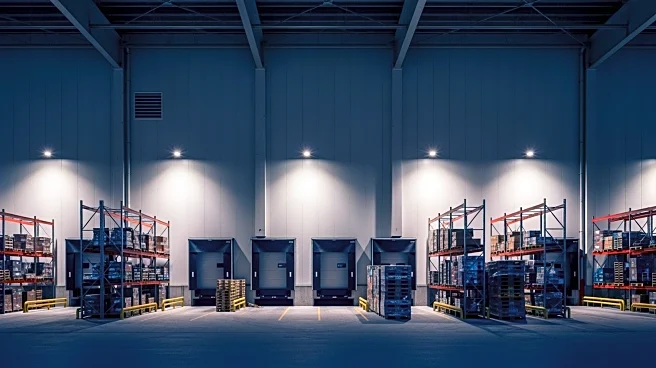What's Happening?
The U.S. hotel industry has reported significant growth in key performance metrics for the week ending November 8, 2025, compared to the same period last year. This positive trend is attributed to the comparison
against the election week in 2024, which had different market dynamics. According to CoStar's latest data, hotel occupancy across the U.S. increased by 2.5% to reach 64.2%. The average daily rate (ADR) rose by 3.6% to $162.70, while revenue per available room (RevPAR) saw a 6.2% boost, reaching $104.42. San Francisco and Washington, D.C. emerged as top-performing markets, with both cities experiencing a 43.0% increase in RevPAR. San Francisco also led in occupancy growth, increasing by 23.1% to 71.6%, while Washington, D.C. saw the most significant surge in ADR, up 21.9% to $195.73. Conversely, Tampa faced declines in both occupancy and RevPAR, attributed to the high displacement demand following Hurricane Milton in 2024.
Why It's Important?
The growth in the U.S. hotel industry is a positive indicator for the hospitality sector, suggesting a recovery and stabilization following the disruptions caused by the election week in 2024. This upswing in occupancy and revenue reflects increased consumer confidence and travel activity, which are crucial for the economic health of the hospitality industry. The performance of major markets like San Francisco and Washington, D.C. highlights the potential for urban centers to drive industry growth. However, the challenges faced by Tampa underscore the ongoing impact of natural disasters on regional markets. The data provides valuable insights for stakeholders in the real estate and property markets, helping them strategize for future investments and operations.
What's Next?
The U.S. hotel industry may continue to experience fluctuations as it navigates post-election dynamics and regional challenges. Stakeholders will likely focus on leveraging the positive trends in major markets while addressing the issues faced by regions like Tampa. The industry might see increased investments in infrastructure and marketing to capitalize on the growing demand for travel and accommodation. Additionally, hotels may implement strategies to enhance customer experience and adapt to changing consumer preferences. Monitoring these developments will be crucial for industry leaders and policymakers to ensure sustained growth and resilience.
Beyond the Headlines
The resurgence in the hotel industry could have broader implications for related sectors such as tourism, transportation, and local economies. As travel activity increases, there may be a ripple effect on businesses that rely on tourism, including restaurants, entertainment venues, and retail stores. The industry’s recovery could also influence employment rates, providing job opportunities in hospitality and service sectors. Furthermore, the focus on urban centers like San Francisco and Washington, D.C. may drive urban development and infrastructure improvements, enhancing the overall appeal and accessibility of these cities.











